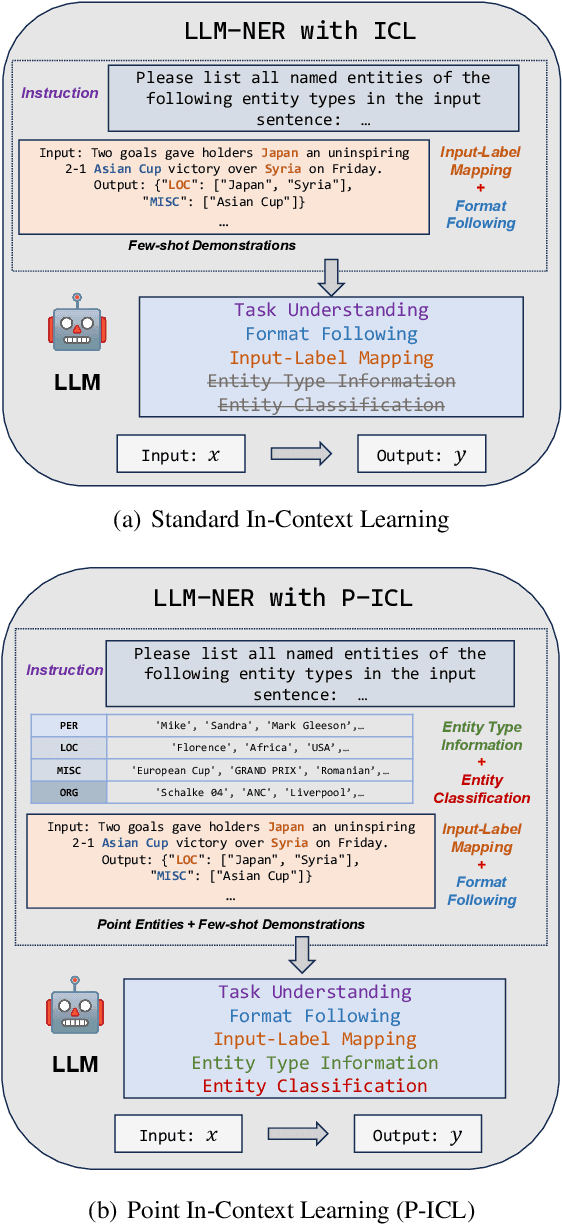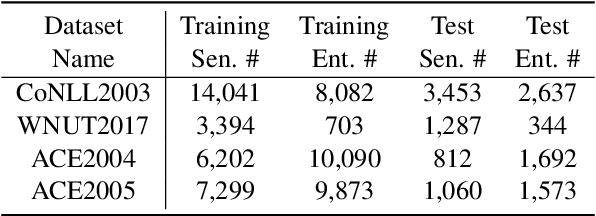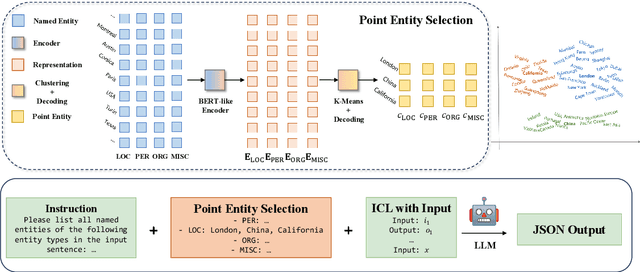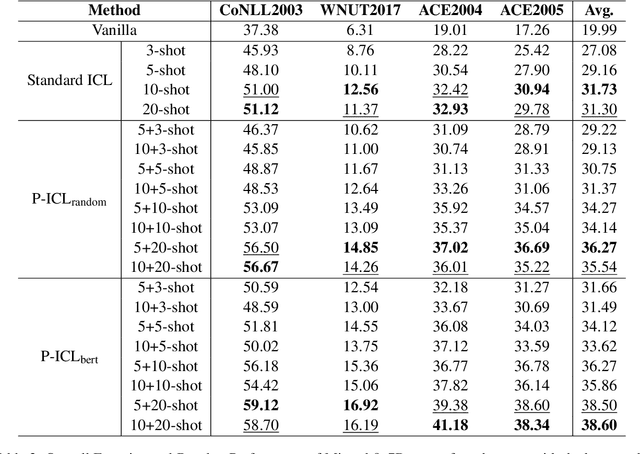Guochao Jiang
RASD: Retrieval-Augmented Speculative Decoding
Mar 05, 2025Abstract:Speculative decoding accelerates inference in large language models (LLMs) by generating draft tokens for target model verification. Current approaches for obtaining draft tokens rely on lightweight draft models or additional model structures to generate draft tokens and retrieve context from databases. Due to the draft model's small size and limited training data, model-based speculative decoding frequently becomes less effective in out-of-domain scenarios. Additionally, the time cost of the drafting phase results in a low upper limit on acceptance length during the verification step, limiting overall efficiency. This paper proposes RASD (Retrieval-Augmented Speculative Decoding), which adopts retrieval methods to enhance model-based speculative decoding. We introduce tree pruning and tree fusion to achieve this. Specifically, we develop a pruning method based on the draft model's probability distribution to construct the optimal retrieval tree. Second, we employ the longest prefix matching algorithm to merge the tree generated by the draft model with the retrieval tree, resulting in a unified tree for verification. Experimental results demonstrate that RASD achieves state-of-the-art inference acceleration across tasks such as DocQA, Summary, Code, and In-Domain QA. Moreover, RASD exhibits strong scalability, seamlessly integrating with various speculative decoding approaches, including both generation-based and retrieval-based methods.
Mitigating Out-of-Entity Errors in Named Entity Recognition: A Sentence-Level Strategy
Dec 11, 2024Abstract:Many previous models of named entity recognition (NER) suffer from the problem of Out-of-Entity (OOE), i.e., the tokens in the entity mentions of the test samples have not appeared in the training samples, which hinders the achievement of satisfactory performance. To improve OOE-NER performance, in this paper, we propose a new framework, namely S+NER, which fully leverages sentence-level information. Our S+NER achieves better OOE-NER performance mainly due to the following two particular designs. 1) It first exploits the pre-trained language model's capability of understanding the target entity's sentence-level context with a template set. 2) Then, it refines the sentence-level representation based on the positive and negative templates, through a contrastive learning strategy and template pooling method, to obtain better NER results. Our extensive experiments on five benchmark datasets have demonstrated that, our S+NER outperforms some state-of-the-art OOE-NER models.
AgentRE: An Agent-Based Framework for Navigating Complex Information Landscapes in Relation Extraction
Sep 03, 2024Abstract:The relation extraction (RE) in complex scenarios faces challenges such as diverse relation types and ambiguous relations between entities within a single sentence, leading to the poor performance of pure "text-in, text-out" language models (LMs). To address these challenges, in this paper, we propose an agent-based RE framework, namely AgentRE, which fully leverages the potential of large language models (LLMs) including memory, retrieval and reflection, to achieve RE in complex scenarios. Specifically, three major modules are built in AgentRE serving as the tools to help the agent acquire and process various useful information, thereby obtaining improved RE performance. Our extensive experimental results upon two datasets in English and Chinese demonstrate our AgentRE's superior performance, especially in low-resource scenarios. Additionally, the trajectories generated by AgentRE can be refined to construct a high-quality training dataset incorporating different reasoning methods, which can be used to fine-tune smaller models. Code is available at https://github.com/Lightblues/AgentRE.
Adaptive Reinforcement Learning Planning: Harnessing Large Language Models for Complex Information Extraction
Jun 17, 2024Abstract:Existing research on large language models (LLMs) shows that they can solve information extraction tasks through multi-step planning. However, their extraction behavior on complex sentences and tasks is unstable, emerging issues such as false positives and missing elements. We observe that decomposing complex extraction tasks and extracting them step by step can effectively improve LLMs' performance, and the extraction orders of entities significantly affect the final results of LLMs. This paper proposes a two-stage multi-step method for LLM-based information extraction and adopts the RL framework to execute the multi-step planning. We regard sequential extraction as a Markov decision process, build an LLM-based extraction environment, design a decision module to adaptively provide the optimal order for sequential entity extraction on different sentences, and utilize the DDQN algorithm to train the decision model. We also design the rewards and evaluation metrics suitable for the extraction results of LLMs. We conduct extensive experiments on multiple public datasets to demonstrate the effectiveness of our method in improving the information extraction capabilities of LLMs.
Tokenization Matters! Degrading Large Language Models through Challenging Their Tokenization
May 27, 2024Abstract:Large Language Models (LLMs) have shown remarkable capabilities in language understanding and generation. Nonetheless, it was also witnessed that LLMs tend to produce inaccurate responses to specific queries. This deficiency can be traced to the tokenization step LLMs must undergo, which is an inevitable limitation inherent to all LLMs. In fact, incorrect tokenization is the critical point that hinders LLMs in understanding the input precisely, thus leading to unsatisfactory output. To demonstrate this flaw of LLMs, we construct an adversarial dataset, named as $\textbf{ADT (Adversarial Dataset for Tokenizer)}$, which draws upon the vocabularies of various open-source LLMs to challenge LLMs' tokenization. ADT consists of two subsets: the manually constructed ADT-Human and the automatically generated ADT-Auto. Our empirical results reveal that our ADT is highly effective on challenging the tokenization of leading LLMs, including GPT-4o, Llama-3, Qwen2.5-max and so on, thus degrading these LLMs' capabilities. Moreover, our method of automatic data generation has been proven efficient and robust, which can be applied to any open-source LLMs. To the best of our knowledge, our study is the first to investigating LLMs' vulnerability in terms of challenging their token segmentation, which will shed light on the subsequent research of improving LLMs' capabilities through optimizing their tokenization process and algorithms.
SED: Self-Evaluation Decoding Enhances Large Language Models for Better Generation
May 26, 2024Abstract:Existing Large Language Models (LLMs) generate text through unidirectional autoregressive decoding methods to respond to various user queries. These methods tend to consider token selection in a simple sequential manner, making it easy to fall into suboptimal options when encountering uncertain tokens, referred to as chaotic points in our work. Many chaotic points exist in texts generated by LLMs, and they often significantly affect the quality of subsequently generated tokens, which can interfere with LLMs' generation. This paper proposes Self-Evaluation Decoding, SED, a decoding method for enhancing model generation. Analogous to the human decision-making process, SED integrates speculation and evaluation steps into the decoding process, allowing LLMs to make more careful decisions and thus optimize token selection at chaotic points. Experimental results across various tasks using different LLMs demonstrate SED's effectiveness.
P-ICL: Point In-Context Learning for Named Entity Recognition with Large Language Models
May 08, 2024



Abstract:In recent years, the rise of large language models (LLMs) has made it possible to directly achieve named entity recognition (NER) without any demonstration samples or only using a few samples through in-context learning (ICL). However, standard ICL only helps LLMs understand task instructions, format and input-label mapping, but neglects the particularity of the NER task itself. In this paper, we propose a new prompting framework P-ICL to better achieve NER with LLMs, in which some point entities are leveraged as the auxiliary information to recognize each entity type. With such significant information, the LLM can achieve entity classification more precisely. To obtain optimal point entities for prompting LLMs, we also proposed a point entity selection method based on K-Means clustering. Our extensive experiments on some representative NER benchmarks verify the effectiveness of our proposed strategies in P-ICL and point entity selection.
ToNER: Type-oriented Named Entity Recognition with Generative Language Model
Apr 14, 2024Abstract:In recent years, the fine-tuned generative models have been proven more powerful than the previous tagging-based or span-based models on named entity recognition (NER) task. It has also been found that the information related to entities, such as entity types, can prompt a model to achieve NER better. However, it is not easy to determine the entity types indeed existing in the given sentence in advance, and inputting too many potential entity types would distract the model inevitably. To exploit entity types' merit on promoting NER task, in this paper we propose a novel NER framework, namely ToNER based on a generative model. In ToNER, a type matching model is proposed at first to identify the entity types most likely to appear in the sentence. Then, we append a multiple binary classification task to fine-tune the generative model's encoder, so as to generate the refined representation of the input sentence. Moreover, we add an auxiliary task for the model to discover the entity types which further fine-tunes the model to output more accurate results. Our extensive experiments on some NER benchmarks verify the effectiveness of our proposed strategies in ToNER that are oriented towards entity types' exploitation.
Reason from Fallacy: Enhancing Large Language Models' Logical Reasoning through Logical Fallacy Understanding
Apr 04, 2024Abstract:Large Language Models (LLMs) have demonstrated good performance in many reasoning tasks, but they still struggle with some complicated reasoning tasks including logical reasoning. One non-negligible reason for LLMs' suboptimal performance on logical reasoning is their overlooking of understanding logical fallacies correctly. To evaluate LLMs' capability of logical fallacy understanding (LFU), we propose five concrete tasks from three cognitive dimensions of WHAT, WHY, and HOW in this paper. Towards these LFU tasks, we have successfully constructed a new dataset LFUD based on GPT-4 accompanied by a little human effort. Our extensive experiments justify that our LFUD can be used not only to evaluate LLMs' LFU capability, but also to fine-tune LLMs to obtain significantly enhanced performance on logical reasoning.
 Add to Chrome
Add to Chrome Add to Firefox
Add to Firefox Add to Edge
Add to Edge